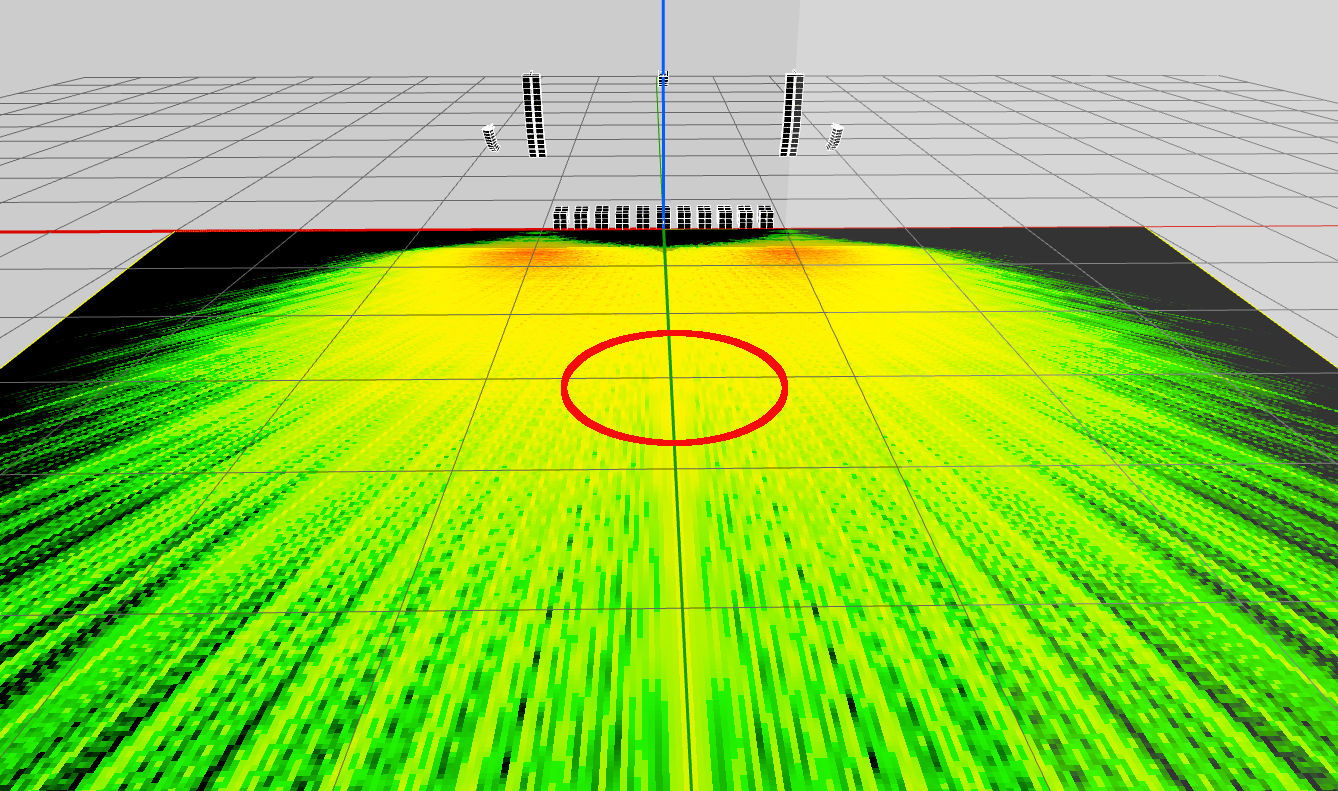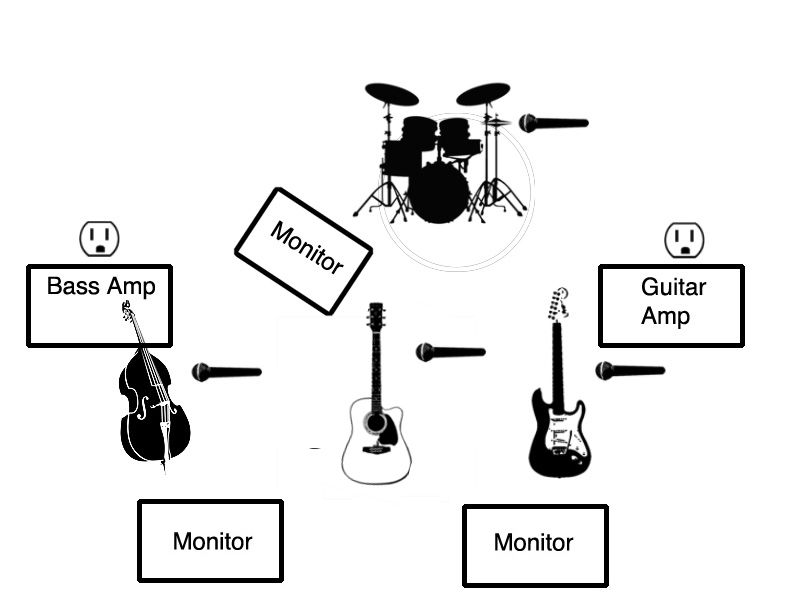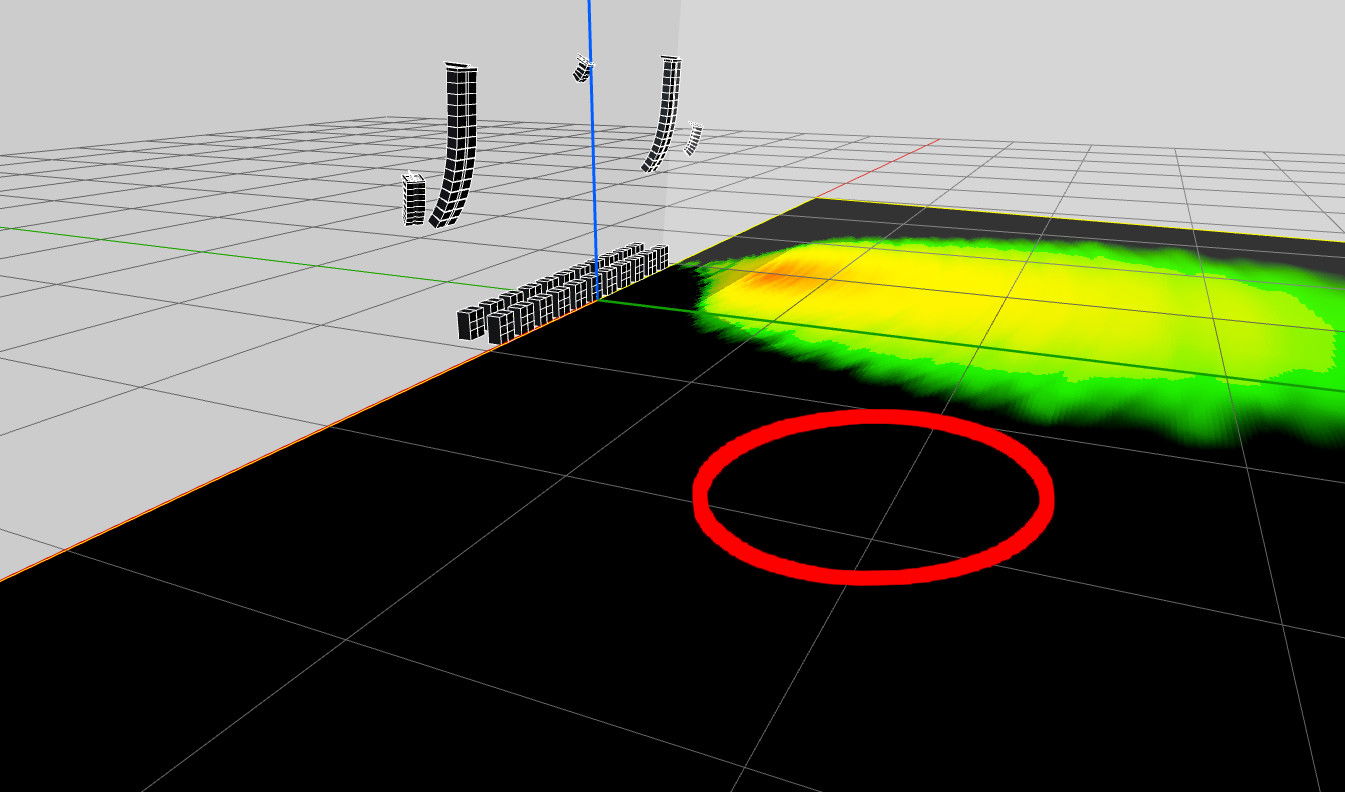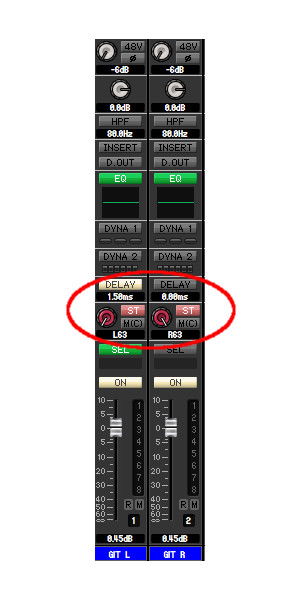Precedence panning or why I work without the pan-pot on large stages
Precedence Panning
Why I Don’t Use the Pan Pot on Large Stages
I started engaging with this topic after working front-of-house during a concert, and I became annoyed by not wanting to put the pan to more than max 9 / 3 o’clock. I was lucky enough to have some time on my hands, so I thought I would experiment with panning by delay. Later I learned that a colleague of mine uses the same method, and so I decided to take a closer look at this technique. On the web, I found a number of articles on precedence panning, but none  Fig. 1 Sweetspotof them detailed how to use it for live sound. In fact, most of the literature online only described the method being applied in a studio setting. Let's try to fill this gap.
Fig. 1 Sweetspotof them detailed how to use it for live sound. In fact, most of the literature online only described the method being applied in a studio setting. Let's try to fill this gap.
Assume we are FOH at a large festival stage. On the left and right we have our line arrays with some 20 meters between them; 30 to 40 meters in front of the stage we’ve got the FOH in the sweet spot. Our task is crystal clear: As many guests as possible should be able to listen to the best possible sound. We also know that only a small part of the audience will have the benefit of a genuine stereo experience, i.e., those lucky few who stand in the middle between the two arrays, at a sufficient distance from the stage. To better understand how panning works, let's take a short look at the biological background. There are two main factors that help the human brain to determine the direction from which a sound signal is perceived:
- The level of intensity of the sound signal, i.e., volume: If the sound signal has a higher frequency, our head casts an acoustic shadow; acoustic signals that reach us from the left side are being toned down by our head for the right ear, as a result of which on the right side they appear to be quieter. However, lower frequencies have a longer wavelength and move around the head with ease; they seem to be equally loud in both the right and left ear. It is this difference in the level of intensity that we control with the pan pot.
- Differences in propagation time: Acoustic signals that come from the right side first reach the right ear; they reach the left ear short time after. In this case, short time means really, really short; there will be a delay of only 0.0006 seconds; that's how long it takes for the sound to travel from the right ear to the left ear, almost regardless of the frequency of the sound.
 Fig. 2 Stageplot
Fig. 2 Stageplot
Let's go back to our festival stage.
As you can see from the stage plot, our guitar is positioned on the right side of the stage. You don’t need to be a scientist to find the idea to pan it to the right appealing. But still, if we now just grab the pan pot and crank it to the right, we would make a lot of people angry. Those on the left side in front of the stage would hear the guitar only very quietly as a bleed from the right hang—if they hear it at all. For many sound engineers, this would be reason enough not to use the pan pot at all.
And this is exactly where precedence panning comes in. What is being applied Fig. 3 Poor people without guitar
Fig. 3 Poor people without guitar
in a studio with great caution (since mono summation will lead to phasing, comb filters, and similar effects) might be suitable in a live setting as it can provide listeners in the sweet spot a full stereo experience without withholding important parts of the music from listeners at the margins.
This can be achieved quite easily with modern digital desks. Simply route the guitar that you want to pan to two different input channels; pan it hard right and hard left and put a delay on  Fig. 4 panning
Fig. 4 panning
the left channel. Doing this creates the impression of the guitar coming from the right side.
The range of delay within which this effect works is pretty small and, as is almost always the case in sound, it comes with a trade-off. In this case, it is a trade-off between a minor comb filter which adds a certain degree of waviness to the frequency response of the instrument and the triangulation of the stereo effect. As a rule of thumb, one can say that it takes 1.5 ms to hear the direction from which a signal comes. The time varies, depending on the signal and you need to try it out yourself. For high signals and percussion like signals, it may take only 1 ms to localize them correctly, while that time might expand to 2 to 3 ms with long and deep tones. If it does not work with more than 5 ms, it probably won't work at all. Keep the bass in the middle.
Remember that by using precedence panning, the panned instrument will change its sound slightly in the sweet area with each change of the delay. Our brain will assume that a change in sound is directly correlated to a change in the instrument and cannot happen independently of the instrument. This means that you must set the delay value in the sound check and don't touch it again during the show. If you want to change your panning during the show, you can still use the faders. If you are aiming for a stronger effect on the left side, bring down the right side fader a little and continue working with intensity panning as a way to support precedence panning. The result of this approach will be that both line arrays play the guitar loud and clear for the entire audience—and the lucky few in the sweet area will still have the impression of the guitar coming from the right side.
You need to work with this method yourself, start by twisting and tweaking and find out how it works best for you. If the sound appears to have a phase effect, you probably used too long a delay; assuming, of course, that your equipment has been aligned correctly and does not produce a phase effect just by itself.